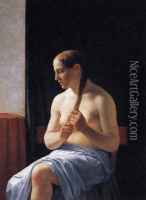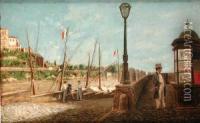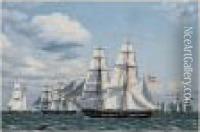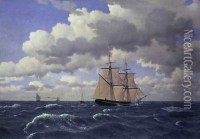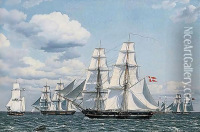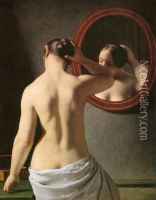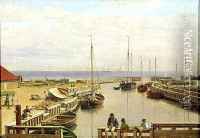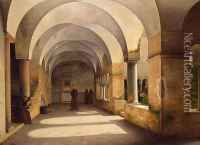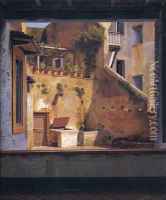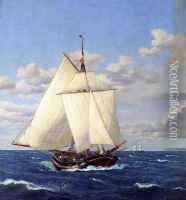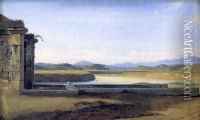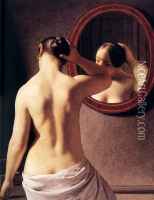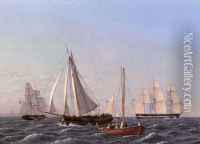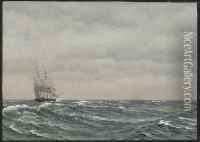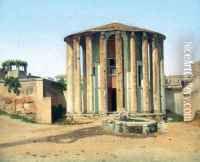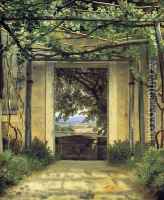Christoffer Wilhelm Eckersberg Paintings
Christoffer Wilhelm Eckersberg was a Danish painter and a central figure in the Golden Age of Danish Painting. He was born on January 2, 1783, in Blåkrog in the Duchy of Schleswig (then part of the kingdom of Denmark, now in modern-day Germany). Eckersberg showed an early interest in art and began his formal education at the Royal Danish Academy of Fine Arts in Copenhagen in 1803, where he was influenced by the neoclassical style and the works of artists such as Jacques-Louis David.
Eckersberg traveled extensively throughout Europe to further his education, spending significant time in Paris and Rome. In Paris, he became a pupil of Jacques-Louis David, which had a profound influence on his style and artistic outlook. During his stay in Rome from 1813 to 1816, he studied classical art and the works of Renaissance masters, which helped refine his approach to painting.
After returning to Denmark, Eckersberg became a professor at the Royal Danish Academy of Fine Arts in 1818 and went on to influence a generation of Danish artists. He is often credited with introducing a new level of realism into Danish art, moving away from the neoclassicism that had dominated earlier in the century. His teaching and his own works placed a strong emphasis on the observation of nature and the study of perspective, which became hallmarks of the Danish Golden Age style.
Among Eckersberg's most celebrated works are his marine paintings and landscapes, as well as his portraits and history paintings. He was particularly adept at capturing the effects of light and atmosphere, and his seascapes are noted for their clarity and calm. In addition to his artistic works, he also kept detailed journals and sketches that provide valuable insights into his creative process and the art scene of his time.
Eckersberg continued to paint and teach until his later years, leaving a legacy that deeply influenced Danish art. He passed away on July 22, 1853, in Copenhagen. His work continues to be revered in Denmark and beyond, and he is remembered as one of the founding figures of the Danish Golden Age of painting.
